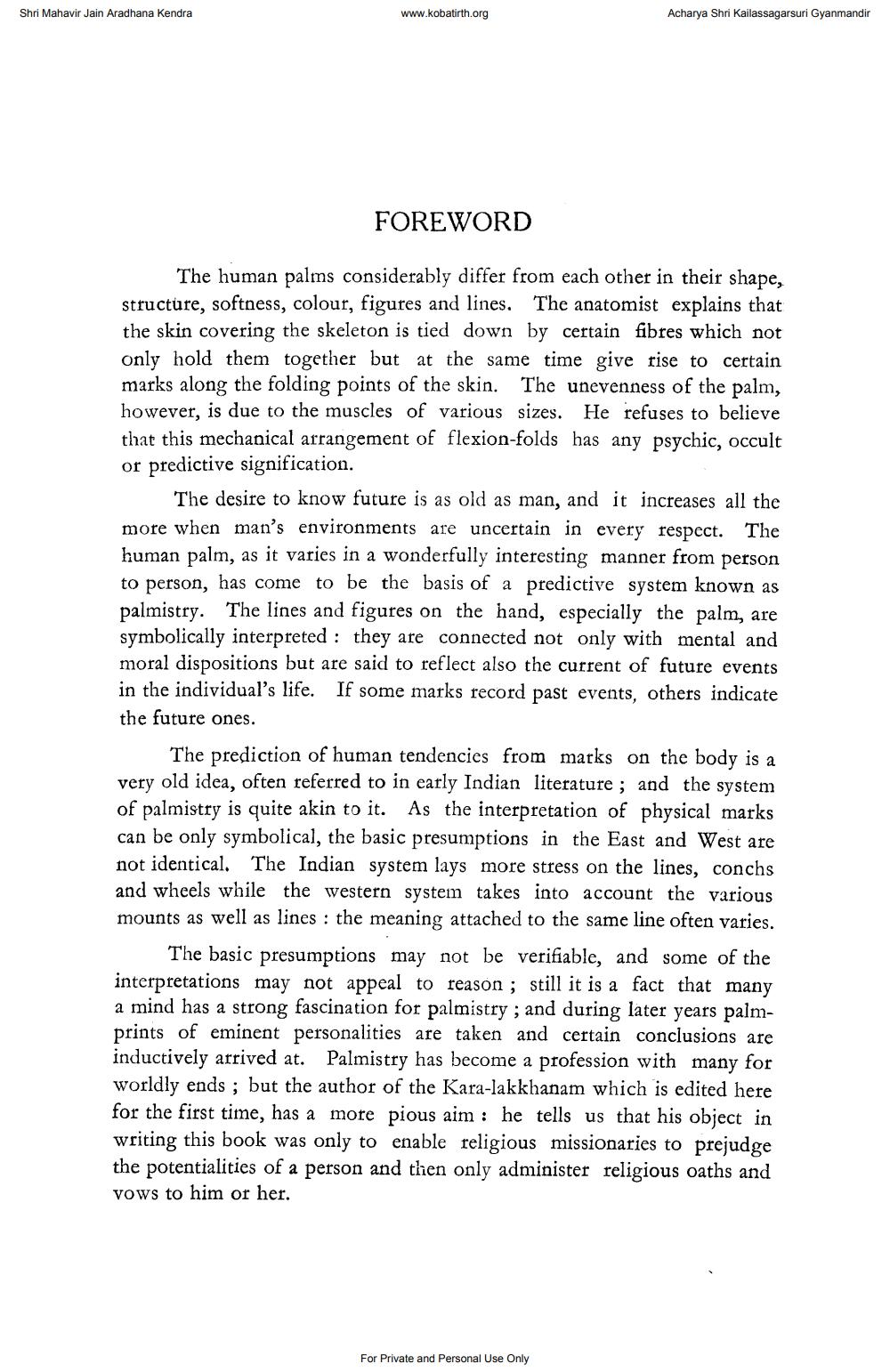________________
Shri Mahavir Jain Aradhana Kendra
www.kobatirth.org
Acharya Shri Kailassagarsuri Gyanmandir
FOREWORD
The human palms considerably differ from each other in their shape, structure, softness, colour, figures and lines. The anatomist explains that the skin covering the skeleton is tied down by certain fibres which not only hold them together but at the same time give rise to certain marks along the folding points of the skin. The unevenness of the palm, however, is due to the muscles of various sizes. He refuses to believe that this mechanical arrangement of flexion-folds has any psychic, occult or predictive signification.
The desire to know future is as old as man, and it increases all the more when man's environments are uncertain in every respect. The human palm, as it varies in a wonderfully interesting manner from person to person, has come to be the basis of a predictive system known as palmistry. The lines and figures on the hand, especially the palm, are symbolically interpreted : they are connected not only with mental and moral dispositions but are said to reflect also the current of future events in the individual's life. If some marks record past events, others indicate the future ones.
The prediction of human tendencies from marks on the body is a very old idea, often referred to in early Indian literature, and the system of palmistry is quite akin to it. As the interpretation of physical marks can be only symbolical, the basic presumptions in the East and West are not identical. The Indian system lays more stress on the lines, conchs and wheels while the western system takes into account the various mounts as well as lines : the meaning attached to the same line often varies.
The basic presumptions may not be verifiable, and some of the interpretations may not appeal to reason ; still it is a fact that many a mind has a strong fascination for palmistry; and during later years palmprints of eminent personalities are taken and certain conclusions are inductively arrived at. Palmistry has become a profession with many for worldly ends ; but the author of the Kara-lakkhanam which is edited here for the first time, has a more pious aim : he tells us that his object in writing this book was only to enable religious missionaries to prejudge the potentialities of a person and then only administer religious oaths and vows to him or her.
For Private and Personal Use Only




